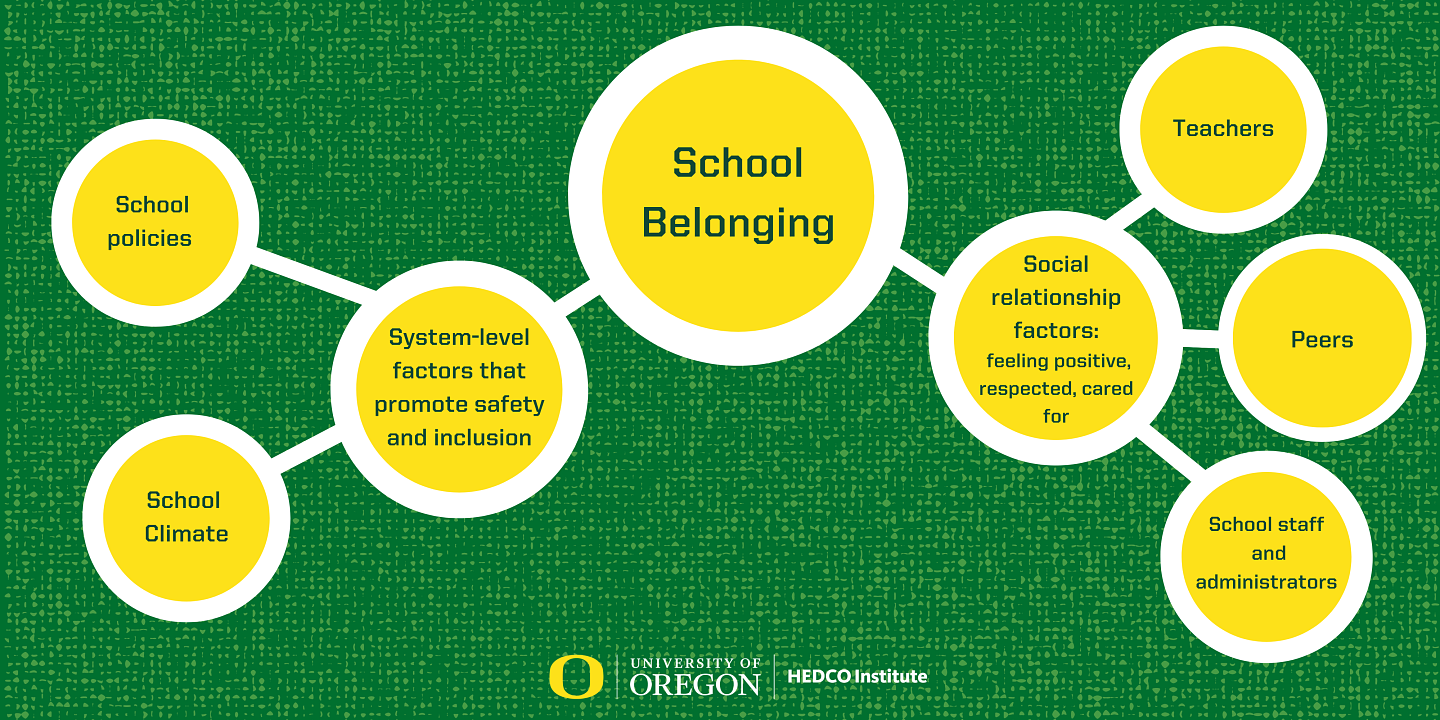By Maria Schweer-Collins, PhD, Research Assistant Professor, HEDCO Institute for Evidence-Based Educational Practice
Last month, we launched our blog series on school belonging by reviewing strategies to promote school belonging among LGBTQIA+ students, and this month we will dig into the research on the links between school belonging and student well-being more broadly.
The COVID-19 pandemic demonstrated that school is a key place for youth to feel connected
The COVID-19 pandemic took a significant toll on the well-being of students across the globe. Rates of depression in U.S. youth rose, with the global prevalence of elevated depression symptoms rising to 25.2%. Youth experienced greater stress, anxiety, social isolation, and grief and loss. For the first time, school primarily occurred virtually and the social fabric of schools shifted dramatically. The disruption of the pandemic spotlighted just how important schools are as places for connection, safety, and relationships that promote youth health and well-being. Now more than ever, schools and communities are aware of the need to promote school belonging for all students.
School belonging, sometimes called school connectedness, is a broad concept that covers important systems-level factors like school policies and school climate, along with person-level factors such as relationships among students, teachers, peers, and school staff and administrators. School belonging can also represent a student’s attachment to and even engagement with the larger school community.

What are the potential benefits of school belonging for K-12 students?
To summarize the research on the numerous benefits of school connectedness and belonging for students, we turn to a recent, comprehensive meta-analysis on the topic (Rose et al., 2022). A summary of findings from 90 studies showed that school belonging had beneficial effects across several key health domains for K-12 students: Students who endorsed greater school belonging had lower substance use, less risky sexual behaviors, experienced less violence, and reported better mental health. Importantly, the researchers also explored whether these benefits varied for students from different racial/ethnic backgrounds. They found that school belonging had a greater protective benefit on mental health for students of color, in studies that involved African American, Asian America, and Hispanic/Latina/o students. Together these findings emphasize the importance of leveraging policies and programs to enhance school belonging to prevent adverse health outcomes and promote well-being among all students.
TL;DR
When students feel value and connection at school, they experience greater belonging. In turn, school belonging fosters greater well-being for students across important health domains. The link between school belonging and health shows the importance of considering both the larger school community and culture and 1:1 school relationships as factors critical for fostering positive outcomes for the whole student.
Stay tuned for the next blog in our series, where we will answer the question: what can my school do to foster a greater sense of school belonging? We will look into practices that promote school belonging by providing an overview of evidence-based strategies that promote school belonging and connectedness for K-12 students.
HEDCO Institute Blog 3 - June 27, 2023
Explore more:



